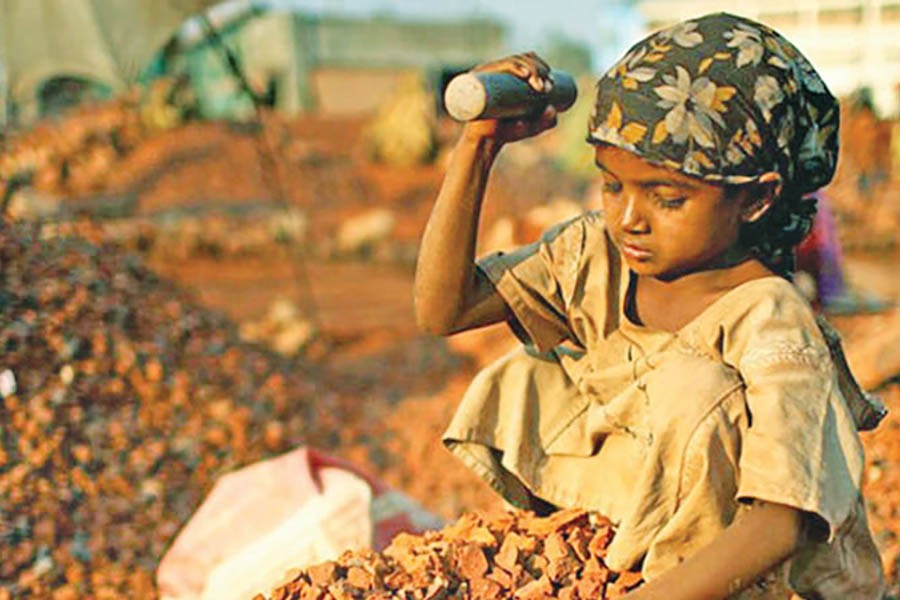
Published :
Updated :

With 93 per cent of the country's child workers still active in the informal sector comprising hazard-filled factories and services, children seem to be destined to pass through unremittingly difficult times. It stands in sharp contrast with the lofty goals set for the country's children.
Notwithstanding Bangladesh's ratification of the UN Convention on the Rights of the Child (CRC) in August 1990, there have not been any major changes in the condition of the vulnerable among children here. Except the phasing out of children from the apparel industry after the 2013 Rana Plaza catastrophe, child labour continues to blight the country. The sectors still using child labour include the formal ones like shrimp processing industry, as well as myriads of those operating informally. Children catching shrimp fry without attending school in the coastal areas are still common. They are said to be forced into the job by their poverty-stricken families. The practice goes on unabated despite a prohibition being in place. However, the situation is worse in the informal sector. Operating in the cities and towns across the country, the sector comprises hundreds of factories and workshops. Service sectors do not lag behind, with that of transport virtually topping the list. Along with back-breaking physical labour, these jobs pose grave threats to child workers' health. Alarmingly enough, these industrial units are on the rise.
People aware of the deteriorating state of child labour have reasons to feel edgy. What add to their discomfort are the child-employing and hazardous units' continued forays into newer areas. Traditionally, small boys and girls engaged in making 'bidis', crude hand-rolled cigarettes, have been found to be dominating the spectacle. It has not changed much. With the adult hands opting out for better-paying professions, the poor children have veritably been left to rot away to remain exposed to noxious substances. Such factories dot large swathes in the country's northern region. Child labour employed in the processing of addictive tobacco products like 'jarda', 'gool' etc is another common view in the cities and towns. Most of these tiny workers are found falling victim to lung diseases and respiratory complications in later life. The list of the scourges is long, which include long hours of work at dingy urban factories manufacturing products from e-waste and toxic refuses and at recycling units etc. Lately, the mushrooming balloon factories using toxic substances have received broad media focus.
On many occasions the government has expressed its resolve to eliminate child labour from 38 hazardous sectors by 2021. It aims to free all sectors of child labour itself by 2025. According to a survey conducted by the Bangladesh Bureau of Statistics, 3.45 million children have been found engaged in active labour -many of them in hazardous jobs. It notes the number of children in labour market has in the recent years increased by 250,000.
In spite of the elimination targets, child labour in the country continues to be a national problem. It is a direct threat to the country's future citizens. With 93 per cent of the country's child workers still employed in factories and services considered extremely hazardous, children seem to be destined to face uncertain and hostile work environment and living conditions. It stands up in sharp contrast with the lofty goals set for the country's children. The earlier the nation can ensure a child-friendly society, the faster it finds itself among the countries investing fruitfully in their children.


 For all latest news, follow The Financial Express Google News channel.
For all latest news, follow The Financial Express Google News channel.